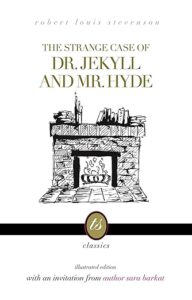The gothic thriller by Robert Louis Stevenson isn’t what I remembered it to be
“X” marks the spot. Pirates hunting for buried treasure, with parrots perched on their shoulders. Treasure maps.
It all came from a single source.
In 1883, Scottish writer Robert Louis Stevenson published The Sea Cook: A Story for Boys. It was first serialized in 1881 and 1882 in a children’s magazine, Young Folks, under another title — Treasure Island, or the Mutiny of the Hispaniola. It was under the title Treasure Island that the novel became what may be the most adapted book of all times, inspiring films, radio programs, comic books, television series, theater plays, musical compositions, and even video games.
It was the first book by Stevenson I read, about age 10. Not long after, I read his 1883 novel The Black Arrow: A Tale of the Two Roses, his adventure (and romance) story of the War of the Roses. I recall reading it three times; I found it far more compelling that Treasure Island.

What it is, however, is a gothic thriller, clearly intended for adult readers. A wealthy and highly respected physician, Henry Jekyll, seems to have a strange connection to a rather low-life and thuggish man named Edward Hyde. It mystifies his attorney, who is the chief narrator of most of the story. When a housemaid witnesses Hyde’s brutal murder of a member of the House of Lords, Mr. Hyde goes into hiding. It happens at the same time that Jekyll withdraws from his friends. The hue and cry is on for Hyde, who seems to have vanished from London.
The murder is the one graphic depiction of Hyde’s violence, and it’s told secondhand, from the viewpoint of the housemaid. His other heinous acts are only referred to in general; the man had a murderous and rather vicious reputation.
All eventually is revealed though the letters of another doctor and Jekyll himself. The surprise is not that Jekyll and Hyde are one and the same; that is too well known to ever be a spoiler. Nor is it the actions of the monster Hyde. Instead, the surprise is the character of Jekyll — respected, intelligent, educated, and given to allowing his worst tendencies free rein, by using drugs. This is not a simple tale of good and evil, or good versus evil. What makes this story so unsettling is that Stevenson suggests that even the good within us is corrupted.

Robert Louis Stevenson
It’s intriguing to think that the same mind that gave us Jekyll and Hyde also gave us A Child’s Garden of Verses.
Stevenson, born in 1850, wrote novels, essays, plays, poetry, and travelogues. Born in Scotland, he lived in France, California, England, Colorado, and Samoa, where he died in 1894. He’s moved in and out of literary fashion, but today he’s considered second to Charles Dickens among 19th century novelists.
Gothic thriller it may be, but The Strange Case of Dr. Jekyll and Mr. Hyde deserves contemporary readers. And in this new edition, you can enjoy Barkat’s simply drawn yet lively illustrations, along with her thoughtful invitation to read the book. It’s an unsettling work, one that will linger with you long after you finish reading.
Photo by Doolallyally, Creative Commons, via Flickr. Post by Glynn Young.
How to Read a Poem uses images like the mouse, the hive, the switch (from the Billy Collins poem)—to guide readers into new ways of understanding poems. Anthology included.
“I require all our incoming poetry students—in the MFA I direct—to buy and read this book.”
—Jeanetta Calhoun Mish
- Longfellow’s “Paul Revere’s Ride”: Creating a National Legend - April 17, 2025
- Poets and Poems: Katie Kalisz and “Flu Season” - April 15, 2025
- Poets and Poems: Michelle Ortega and “When You Ask Me, Why Paris?” - April 10, 2025


Laura Lynn Brown says
Hmm … I’m not sure whether I’ve read it or just seen dramatizations, either. I loved Sara’s illustrated “The Yellow Wallpaper,” and this new take on illustrated classics.